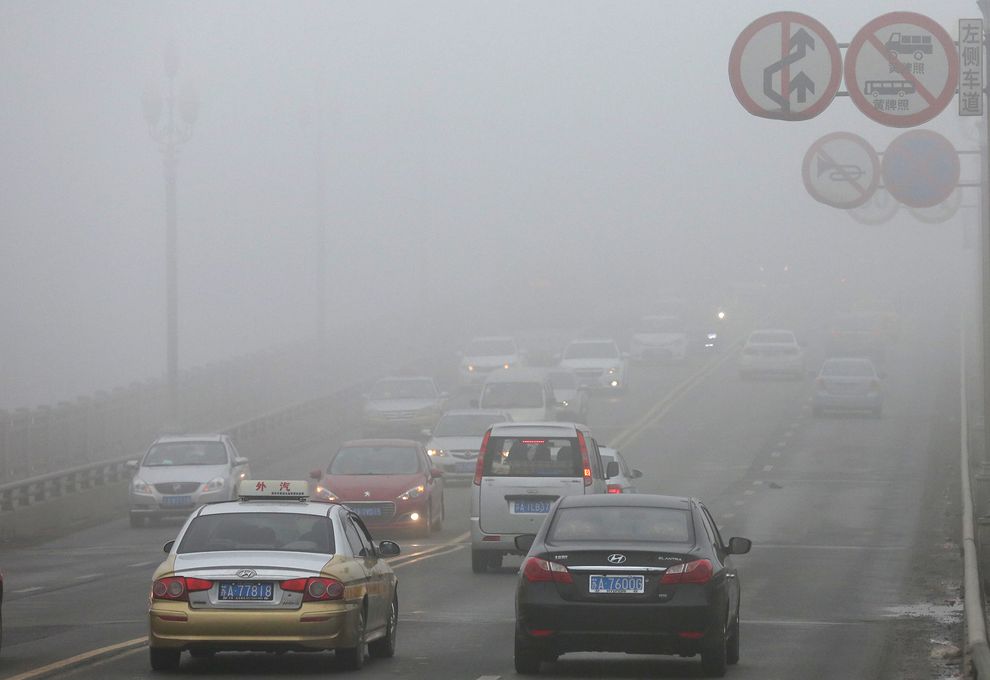Dire UN Climate Reports Raise Questions About Global Willpower

On Sunday, the Intergovernmental Panel on Climate Change (IPCC) released its third major climate assessment, rounding out a process that began in September and plays out every seven years.
The reports indicate that sharp greenhouse gas emissions cuts worldwide need to begin now, with a 40 percent to 70 percent reduction by mid-century, to avert the worst effects of climate change.
“We cannot play a waiting game where we bet on future technological miracles to emerge and save the day,” said Christiana Figueres, head of the UN Framework Convention on Climate Change (UNFCCC), in a statement on the report.
The UNFCCC has hosted international summits aimed at fostering worldwide agreements on halting global warming since the 1990s, with the next big one scheduled for Paris in 2015.
The UN reports have been aimed largely at world leaders attending the summit, the most anticipated since a 2009 meeting in Denmark.
“Above all, governments must strengthen and expand bold policy incentives to reduce emissions at home and together construct a new climate change agreement in Paris next year,” Figueres said.
There are doubts about whether governments will go that far, but the IPCC reports indicate that such action is needed. Among the reports’ findings:
—Humanity’s influence on a warming climate is “clear” and has accelerated since the 1950s largely due to burning oil, coal, and other fossil fuels that release atmosphere-warming greenhouse gases.
—Global warming is already harming agriculture, the environment, and human health in real ways worldwide.
—Greenhouse gas emissions rates have accelerated since 1970, with the steepest increase coming in the past decade. About 80 percent of those emissions are tied to fossil fuel use.
The worst effects of climate change include acidified oceans, higher sea levels, and crop losses. (See also: “New Climate Change Report Warns of Dire Consequences.”)
Because the world has dithered over the past two decades, averting that increase looks difficult but still possible, the reports say. But the possibility rests on the prospect of a coordinated and more or less immediate turn toward low-emissions economies worldwide.
Danger Diplomacy
Written by thousands of science, policy, and economics experts, the IPCC reports represent a synthesis of existing climate research knowledge, focusing on the evidence of a warming climate (“virtually certain”), the global impacts, and the ways we might avert its most catastrophic effects.
A 1992 agreement commits nations worldwide to avert that level of warming, broadly seen as a 3.6-degree Fahrenheit (2-degree Celsius) increase in global average surface temperatures over preindustrial levels.
Everyone from town sewage supervisors deciding whether to buy bigger storm culverts to world leaders deciding whether to change their nation’s energy streams relies on IPCC findings to some extent.
The IPCC reports help those leaders determine exactly how much risk of “dangerous” amounts of global warming they can tolerate.
“Defining ‘dangerous’ is not simple,” says one IPCC report author, Charles Kolstad of Stanford University, who notes that different nations make different calculations about the costs and benefits of averting climate change.
Oil-rich Saudi Arabia, for example, likely sees things differently than Pacific island nations threatened by sea-level rise.
Determining how much climate danger can be risked, and what paths to take to avert it, will be on the table at Paris, along with a menu of possible responses.
“These are the most authoritative statements on climate science available,” says emissions tracking expert Kelly Levin, of the World Resources Institute in Washington, D.C. “The IPCC does not recommend policies; they lay them out for officials. But the reports play a central role in policymaking.”
Dollars and Sense
The Sunday report suggests that a worldwide switch to a low-emissions economy is less expensive than many suspect.
Without even taking into account the benefits—cleaner air and less pollution—the cost of switching to that kind of low-emissions world would take only about a 0.06 percent bite out of the yearly increase in global GDP over the next century. Last year, the $73.83 trillion global GDP was up about 3 percent over the previous year.
“It does not cost the world to save the planet,” said one of the IPCC report’s co-chairs, economist Ottmar Edenhofer of Germany’s Potsdam Institute for Climate Impact Research, speaking at a Sunday news conference. “The report outlines the challenges, but it provides hope—modest hope.”
Local Power
The world has already ventured down the road of great expectations in the wake of UN climate reports. To much acclaim, the 2007 IPCC reports, along with Al Gore, won a Nobel Peace Prize.
They also served as the scientific crib sheets for world leaders at the 2009 Copenhagen climate summit, which yielded promises of emissions cuts through 2020.
But the new IPCC report confirms those Copenhagen promises weren’t enough to set worldwide greenhouse gas emissions on a path to avert dangerous global warming. Instead of emissions reductions, an accelerating pace of increases “really leaps out” of recent historical data analyzed in the report, says Harvard’s Robert Stavins, a lead author.
That history alone adds to skepticism that world leaders at the Paris summit will pledge to make real cuts, notes political scientist Steven Cohen of the Earth Institute at Columbia University in New York City, much less a tripling of low-carbon-emissions power systems by 2050.
Others share the skepticism. In an April report, oil giant ExxonMobil called it “unlikely” that world leaders would, by 2040, put the kind of global price on carbon emissions that the IPCC report suggests.
For that reason, Stavins says, the Sunday report also analyzed the potential of “bottom up” climate agreements among cities, states, provinces, and regions to cut emissions. One example is the linkage between California’s carbon emissions permits market and Canada’s province Quebec.
If global climate treaties like the one envisioned for Paris fall flat once more, Stavins says, then arrangements among smaller locales—which most directly bear the brunt of climate disasters—may become “if not the dejure system, [then] the defacto one.”
Collected:
http://news.nationalgeographic.com/

